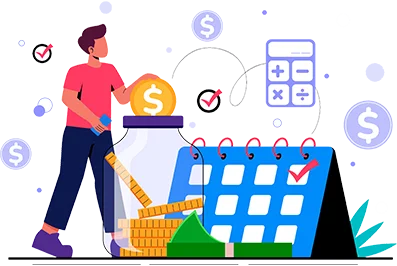Study In Finland
Imagine getting a top-notch degree from a Finland university and confidently starting your dream
Scholarship
Work Rights
Quick VISA

An Easy Guide For International Students
Finland is becoming a popular destination for students from around the world. Why? Because Finland is offering a unique and enriching educational experience.
This country is renowned for its excellent education system and offers a variety of unique courses in a beautiful setting. Students can choose from traditional universities or universities of applied sciences, depending on their career goals.
Therefore, this article aims to be a thorough guide for international students who are thinking about studying in Finland, covering all you need to know from the benefits of studying there to how to apply.
Why Study in Finland
Finland might not be the first country you think of when you plan to study abroad, but it’s definitely worth considering. Here are some great reasons to choose Finland for your studies:
Affordable Education
In Finland, you don’t have to worry about tuition fees at public universities—they’re free, even for students from other countries. Plus, there are many scholarships available to help with your living costs.
High-Quality Schools
Finnish universities are well-known and respected around the world. They focus on teaching you both practical skills and theory, preparing you for a great career after you graduate.
Unique Study Programs
Finland offers some really interesting courses that you might not find elsewhere. Interested in video games? Check out a program in Game Design and Development. Curious about the Arctic? Look into Arctic Sustainable Technologies or even Reindeer Husbandry!
Safe and Friendly
Finland is one of the safest countries you can live in. People here are also very welcoming to international students that makes it easy to make new friends and feel at home.
Good for Your Career
After you finish your studies, Finland makes it easy to stay and work. The government lets graduates stay longer to find a job, which is a great way to start your career in Europe.
Working as an International Student
Finland’s education system is well-known for focusing on both the quality and the happiness of its students. Let’s explore how schooling works in Finland, from the basics all the way up to higher education:
- Starting Strong: Finnish education begins with a nine-year basic education that combines primary and lower secondary school. All children go to the same schools. It creates a friendly and equal environment. Also, there are no entrance exams, and students aren't separated by ability, so everyone has the chance to do well.
- Choosing a Path After Basic Education: Once students finish their initial nine years, they need to make a choice. They can attend general upper secondary schools (lukio) which prepare them for university with a focus on academic subjects. Alternatively, they can go to vocational schools (ammattikoulu) which offer practical training for specific jobs, like nursing or engineering. This lets students pick what best fits their interests and career goals.
- Higher Education - Two Types of Universities: For those continuing their education, Finland has two kinds of universities. Traditional universities focus on theory and research, guiding students towards Master's and PhD degrees. Universities of applied sciences, however, are more about getting students ready for the workforce with practical, job-related education.
- Studying in English: A big plus for international students is that Finland offers many programs in English. This makes it easier to study there, even if you don't speak Finnish.
Requirements for Undergraduate and Postgraduate Studies in Finland
Sure, let’s simplify the requirements you need to know if you’re planning to study for an undergraduate or postgraduate degree in Finland. Here’s what you need to get started:
Academic Requirements
- For undergraduate studies (like a bachelor’s degree), you usually need a high school diploma or an International Baccalaureate (IB) certificate. These show you’re ready for university.
- And for postgraduate studies (like a PhD), you need a master's degree. PhDs in Finland take about 4 years to finish and include 240 ECTS credits. If you're thinking about a PhD, it’s a good idea to contact universities directly to get the details.
Standardized Tests
- Some bachelor's programs might ask for scores from standardized tests like the SAT. Not all programs require this, so check the specific requirements of the program you're interested in.
Language Proficiency
Speaking and understanding the language of your program is key. Here’s what you need depending on the language of instruction:
- Finnish Programs: You’ll need to show you can speak Finnish well, usually through the YKI test.
- English Programs: You’ll likely need to pass an English test like the TOEFL iBT or IELTS. Aim for a TOEFL score between 79 and 92 or an IELTS score of 6.0 to 6.5.
Financial Considerations
Living and studying in Finland offers a great experience, but it’s important to plan your budget wisely. Here’s a simple guide to help you understand the costs involved
Affordable Nordic Lifestyle
- Tuition fees vary basedFinland is a relatively affordable place to study compared to other Western European countries. You'll likely spend between €700 and €1,100 each month. on the university, program, and level of study.
- This covers your housing (like student dorms or shared flats), food (budget-friendly groceries for home cooking), transportation (discounted student transit passes), and other small expenses.


Smart Budget Tips
- To save money, use student discounts whenever you can, cook with fresh ingredients from local markets, and consider cycling—it’s free and healthy! Many universities offer budget-friendly student housing, which can also help you cut costs.
Mostly Free Tuition
- One of Finland's big advantages is its tuition-free policy at public universities for both undergraduate and graduate programs. This is a great benefit for international students.
- However, some Master’s programs, especially at private institutions, may charge tuition fees. Always double-check the tuition details on the university's website.

Bank Statements & Financial Proof
You have to attach a bank statement that covers the past three months to your application.
The statement should clearly show
From the below section you’ll learn a clear and concise idea about bank statements for studying in Findland
- Your name as the account holder.
- The name of the bank where the account is held.
- The currency in which the funds are available.

The Immigration Process
So you’ve envisioned yourself conquering lectures in a stunning Finland classroom – fantastic! But before you pack your bags, there’s one crucial step securing your student visa. Don’t worry, the process is designed to be clear and efficient. Let’s see some key steps to guide you on your visa application journey
Choose Your Program and University
- Start by looking into Finnish universities and find a program that matches what you want to study. Finland has many choices, from engineering to arts and even reindeer studies!
- Check the entry requirements for your chosen program, like language skills and grades.
Apply to the University
- Apply through the university’s online portal. Fill in everything carefully.
- Don’t miss the application deadline. It's very important.
Accept Your University Offer and Pay Tuition
- If the university accepts you, you'll get an acceptance letter. Celebrate!
- If the university aPay any tuition fees if needed. This is usually for students from outside the EU/EEA.ccepts you, you'll get an acceptance letter. Celebrate!
Apply for a Residence Permit
- Apply online at the Enter Finland website.
- Collect all necessary documents
- Proof of Admission: Your university acceptance letter.
- Financial Proof: Show you have enough money for living expenses (at least 560 euros per month).
- Health Insurance: Make sure it covers you well.
- Passport Photos: Take a clear photo.
Biometrics and Interview (if needed)
- You may need to go to a Finnish embassy or consulate to provide fingerprints and a photo.
- Some students might also have an interview. Just be yourself and answer honestly.
Waiting Time
- It takes some time for your application to be processed. While waiting, you can start learning some Finnish words like "kiitos" (thank you).
Arriving in Finland
- Once you get your residence permit, you can book your flight.
- Don’t forget to register where you live within 3 months after you arrive.
Final Thoughts
In the end, I will say again that from the high-quality education and unique programs to the safe and friendly environment, studying in Finland offers numerous benefits for international students.
The application process, while straightforward, involves understanding specific academic and financial requirements, along with navigating the immigration steps smoothly.
So, if you’re ready to explore the educational opportunities in Finland, take the next step towards an enriching academic experience.
Feel free to contact us Education Seed Global for your application process, and let’s make your study abroad journey in Finland a success.

MSc, PhD, Postdoc
Varsity Resource shares information about Processors availability to take new student.
Scholarship Offer
Scholarship offer around the world can be see in a single platform
Research Offer
Research offer from professor or in a team can be found easily here
Higher Education
Varsity Resource helps student to find there dream education opportunity





